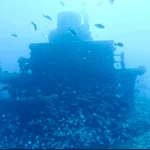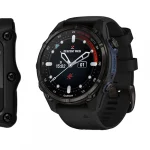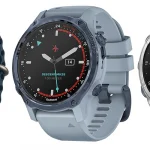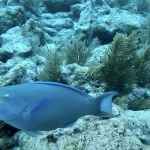Find Affordable Dive Packages Without Compromising Quality
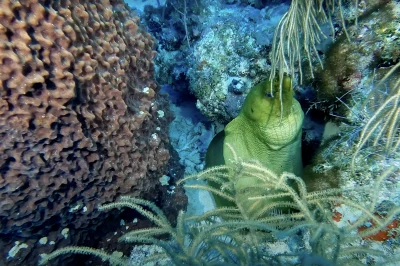
Table of Contents
- Find Affordable Dive Packages Without Compromising Quality
- Debunking Myths About Budget Scuba Diving
- Avoiding Common Budget Diving Mistakes in Key West
- Trends in Eco-Friendly Budget Diving
- Comparative Analysis of Dive Gear Rentals vs. Buying
- Navigate Seasonal Price Variations for Cost-Effective Diving
- Spotlight on Free or Low-Cost Diving Spots Nearby
- Maximizing Dive Experience with Local Knowledge
Introduction
Explore how to make the most of your scuba diving adventure in Key West without breaking the bank. Our guide offers practical tips, myth-busting insights, and data-driven strategies to ensure you enjoy premium experiences even on a budget.
Find Affordable Dive Packages Without Compromising Quality
Debunking Myths About Budget Scuba Diving
When considering budget scuba diving, many divers hold misconceptions that may deter them from exploring affordable options. It’s crucial to clarify these myths and reveal how one can enjoy exceptional diving experiences in Key West without breaking the bank.
Myth 1: Scuba diving is too expensive for beginners. While it’s true that initial costs can be daunting, there are numerous budget-friendly pathways to dive. Entry-level certifications, such as the Open Water Certification, often range around $250, including necessary training and initial dives. Alternatively, you can participate in fun dives for less than $60, which offer basic training and real diving experiences. Many dive schools in Key West provide group certifications that spread costs across several students, making it even more economical.
Myth 2: You have to buy all your gear before diving. This misconception can create a significant financial burden. In reality, many dive shops in Key West offer rental equipment, allowing divers to access high-quality gear without upfront purchases. Renting is a perfect way for beginners to start without committing to expensive equipment. Focus first on essential items like masks, snorkels, and wetsuits, which are generally less expensive. Investing in a personal dive computer can also be a cost-effective step; entry-level models start at around $150.
Myth 3: Affordable gear is low quality and unsafe. Many divers believe that budget gear compromises their safety and diving experience. However, reputable brands manufacture reliable, cost-effective equipment designed for recreational use. Entry-level gear, such as dive computers and wetsuits, is often both affordable and functional, proving serviceable for the majority of recreational divers. Furthermore, renting equipment from established shops ensures that you receive maintained and safe gear.
Myth 4: Budget diving experiences are limited and lack quality. Contrary to this belief, budget diving does not equate to inferior experiences. Many of the best diving spots in Key West, such as the reefs and shipwrecks, are accessible even on a tight budget. Joining group trips or fun dives allows you to explore rich marine environments while sharing costs with fellow divers, maximizing your experience without overspending.
Debunking Myths About Budget Scuba Diving
When diving in Key West on a budget, understanding common missteps can profoundly impact both your experience and wallet. Here are some prevalent mistakes along with strategies to prevent them:
Ignoring Hidden Fees in Gear Rentals
Many dive shops in Key West impose extra charges for equipment used on dives not booked through them. Rentals tied to guided trips may limit flexibility or incur penalties. To avoid unnecessary costs, consider the following:
- Opt for weekly rentals instead of paying daily rates, as this can substantially reduce costs.
- Confirm rental policies upfront, specifically whether the gear can be used independently of guided dives.
Overlooking Cost-Saving Packages
Budget divers often misjudge total expenses by only focusing on the price of dive trips, which can start at $65, without factoring in full rental gear costs, which may exceed $115. Solutions include:
- Comparing basic dive fees against full rental packages to identify true value.
- Choosing dive shops that offer transparent, all-inclusive pricing to avoid surprises.
Diving During Peak Times
Engaging in dives during the Mini Lobster Season (in July) or during holidays can lead to overcrowded boats that focus more on lobster hunting than diving. This typically leads to:
- Higher prices for guided services.
- Missing out on optimal dive sites due to crowding.
Planning dives during off-peak times can afford divers better deals and conditions.
Undervaluing Guided Dives
Although guided dives typically cost more, they may be invaluable. Unguided dives risk missing premier locations, like the famous Vandenberg wreck. Additionally, unguided experiences can lead to:
- Safety oversights, including exceeding depth or time limits.
Budgeting for a guided dive can improve both safety and the overall diving experience, especially for those tackling advanced sites.
Safety-Related Oversights
Failing to monitor depth or bottom time, as well as diving without a buddy, can result in severe consequences such as:
- Decompression sickness or nitrogen narcosis, leading to emergency medical costs.
Utilizing dive computers, adhering to safety protocols, and ensuring you dive with a partner are critical practices.
Not Comparing Dive Locations
Given Key West’s higher costs, divers can save significantly by:
- Holding some dives at shore-accessible sites, like Blue Heron.
- Exploring less busy reefs which may offer lower fees compared to popular spots.
Understanding these common errors can help budget divers in Key West avoid unnecessary expenses and enhance their diving experience. Prioritizing awareness in gear rentals, timing, and safety is paramount for an enjoyable dive adventure.
Avoiding Common Budget Diving Mistakes in Key West
Key West’s 2025 diving trends emphasize cost-effective eco-conscious practices, blending affordability with sustainable marine stewardship.
Eco-Friendly Dive Practices
- Guided Conservation Focused Tours: Dive operators prioritize minimal environmental impact at sites like Sambos Reef and Eastern Dry Rocks, focusing on reef protection and marine biodiversity.
- Artificial Reef Integration: The USS Vandenberg wreck serves dual roles as both a dive site and an artificial reef, fostering marine habitat growth while attracting divers.
- Citizen Science Initiatives: PADI-certified centers incorporate coral monitoring and invasive species reporting into dive trips, actively engaging divers in conservation efforts.
Budget-Friendly Options
- Selective Gear Rentals: Finz Dive Center offers affordable equipment rentals (e.g., mask/fins/snorkel for $20, BCD for $25), allowing divers to customize gear based on individual dive needs.
- Package Deals with Conservation Focus: Navy MWR’s Vandenberg or Reef Dive package ($247.45) includes Nitrox and full gear, combining diving experiences with the conservation of artificial reefs.
Innovative Partnerships and Technologies
- Eco-Friendly Dive Packages: Coral Adventures has introduced reef restoration-focused tours in the Florida Keys, melding sustainable practices with educational dives.
- Virtual Reality Pre-Dive Experiences: OceanX utilizes VR initiatives to let divers preview marine environments, helping to reduce unnecessary physical dives while enhancing conservation awareness.
- Sustainable Resort Partnerships: Eco-conscious resorts emphasize solar energy and plastic-free environments, often partnering with dive operators to offer bundled eco-friendly packages.
| Eco-Trend | Budget-Effective Component |
|---|---|
| Reef conservation dives | Guided tours at protected sites |
| Selective gear rentals | Avoid paying for unused equipment |
| VR pre-dive experiences | Reduce dives while promoting education |
These trends reflect a shift toward accessible, environmentally responsible diving in Key West, leveraging technology, partnerships, and tailored pricing to accommodate eco-conscious budgets.
Trends in Eco-Friendly Budget Diving
Cost Comparisons
When considering whether to rent or buy dive gear in Key West, the costs play a crucial role. Rental prices for full gear packages typically range from $25 to $35 per day. However, if you plan to book multiple dives—specifically five or more—you could reduce your per-dive cost to as low as $15 each, making it an attractive option for budget-conscious divers. Individual rental items such as air tanks usually cost around $20, BCDs about $25, and wetsuits for $12.
By contrast, buying gear comes with a higher initial investment. Basic gear can start at about $20 for single items, like air tanks. However, a complete set—including a BCD, wetsuit, and fins—can exceed $300 to $500, especially when quality is a priority.
Frequency and Long-Term Savings
- Occasional Use: Renting gear is ideal for infrequent divers since it eliminates the upfront cost. If you dive sporadically, purchasing gear may not provide the value needed.
- Frequent Use: For those diving regularly, bulk discounts on rentals can significantly lower costs, with rental fees decreasing after several dives. The break-even point for buying equipment is generally around 10 to 15 dives, after which ownership may be financially beneficial.
Convenience & Accessibility
- Rentals: They provide unparalleled convenience—there is no need to worry about gear maintenance or storage, as dive shops handle this for you.
- Ownership: Owning gear entails responsibilities like transport, maintenance, and storage, which can be cumbersome for travelers.
Personalization & Safety
- Rentals: Gear is standardized and well-maintained, ensuring safety for users. This is particularly advantageous for travelers who might not dive frequently.
- Ownership: Custom-fit gear can enhance comfort and performance, reducing reliance on the availability of rental equipment.
Key Recommendations
- Rent: Ideal for budget-conscious travelers and infrequent divers.
- Buy: Best suited for local or frequent divers aiming for long-term savings and personalized gear.
Dive Computers
- Diving Computers for Female Divers
- Wreck Diving Computers
- Beginner Diving Computers
- Low-Light Diving Computers
- Technical Diving Computers
- Freediving Computers
- Underwater Photography Diving Computers
- Cold-Water Diving Computers
- Travel-Friendly Diving Computers
- Multi-sport Diving Computers
- Budget-Friendly Diving Computers
- Advanced Recreational Diving Computers
- Smartwatch-Compatible Diving Computers
- Child-Friendly Diving Computers
- Military or Professional Diving Computers
Comparative Analysis of Dive Gear Rentals vs. Buying
Understanding Scuba Diving Pricing Patterns in Key West
The standard rate for a 2-tank group dive in Key West hovers around $99 per trip, which includes the necessary gear such as tanks, weights, and guided support from experienced instructors. However, the cost structure becomes more beneficial when you consider multi-trip bookings:
- 3–4 dives: $95 per dive
- 5 or more dives: $90 per dive
In terms of equipment rental, individual gear costs around $34 per trip, but this decreases when multiple dives are booked: $24 for 3–4 dives and $15 for 5 or more dives.
Seasonal Considerations
While specific information on seasonal price changes isn’t widely documented, traditional travel trends suggest that:
- High demand periods, such as winter and holidays, may limit opportunities for discounted packages.
- Off-peak months (typically summer and fall) possibly offer promotional packages or more flexible booking options.
Cost-Saving Strategies
- Package Deals:
- Book 3–4 dive packages to secure a rate of $95 per dive.
- For 5 or more dives, enjoy a further reduced cost of around $90–$95 per dive.
- Optimize Equipment Rentals:
- Select bundled rental options, such as the Core Equipment Pack for $25, or the Full Pack for $35.
- Avoid individual gear rentals (e.g., around $10 for a mask) where packages provide significant savings.
- Dive Type Choices:
- Reef dives and Vandenberg wreck dives are both competitively priced at $99.
- Night dives also hover at $99, with light rentals available for an additional charge.
- Avoid High-Cost Options:
- Steer clear of private charters, which can exceed $1,050 for a 4-hour trip.
- Focus on group dives unless specialized guidance is absolutely necessary.
- Explore Certification Packages:
- Consider certifications like PADI, which often bundle dives with training, thus delivering value compared to purchasing standalone dive slots.
By prioritizing multi-dive packages and bundling equipment rentals, divers can significantly reduce their per-dive costs, making the experience in Key West not only enjoyable but also economical.
Navigate Seasonal Price Variations for Cost-Effective Diving
Spotlight on Free or Low-Cost Diving Spots Nearby
Key West, renowned for its vibrant marine life and stunning underwater landscapes, also offers several avenues for budget-conscious divers. While diving in this area can be pricey, there are opportunities to explore without draining your wallet.
Low-Cost Scuba Diving Trips
- Captain’s Corner: This dive shop provides affordable wreck and reef dives starting at $65 per person, with options for full gear rentals that increase the total to around $115.
- Standard 2-Tank Dives: Expect to pay between $85 and $99 for morning or afternoon dives, including popular sites such as the Vandenberg Wreck or reef dives.
- Night Dives: For those seeking adventure after dark, single-tank night dives typically range from $65 to $85, suitable for experienced divers.
Free Shore Diving Opportunities
Shore diving in Key West can be limited, however, adventurous divers may find opportunities for free-diving for lobster. This comes with its own set of rules, as permits are required to harvest lobster locally. Popular spots include:
- The area near Havana Cabana
- Access points around the Southernmost Beach Resort
However, it is crucial to check local regulations regarding permits and safe harvesting practices before diving for lobster.
Nearby Budget Alternatives
If you’re open to traveling beyond Key West, nearby areas like Pompano and Deerfield Beach offer 2-tank dives for cheaper rates, around $75 to $85 not including gear rental, making them a viable alternative for budget-conscious divers.
Key Considerations
- Most diving experiences in Key West require boat access, with limited options for shore diving.
- Seek out refresher courses and inquire about potential free guiding services, which may be available in different parts of the Florida Keys but are rare in Key West.
To maximize your diving budget while still enjoying Key West’s offerings, prioritize low-cost options such as Captain’s Corner and standard dive packages for memorable underwater experiences.
Spotlight on Free or Low-Cost Diving Spots Nearby
Local knowledge significantly enhances diving experiences in Key West by optimizing site selection, promoting conservation efforts, and offering educational opportunities. Here’s how that works in practice:
Optimal Site Selection
Experienced dive captains know the waters of Key West intimately. They prioritize reefs, shipwrecks, and coral gardens based on elements like current conditions and marine life activity. For instance, the USNS General Hoyt S. Vandenberg, a massive 520-foot artificial reef, is often favored due to its rich biodiversity and fascinating structural complexities. This site not only offers adventure but also allows divers to engage with a variety of marine species in a vibrant ecosystem. Guided two-tank trips usually target specific locations like Sambos Reef or Eastern Dry Rocks, which feature healthy underwater landscapes that support diverse marine life.
Eco-Conscious Diving
Many dive operators align their excursions with reef conservation goals, ensuring that environmental impacts are minimized. On guided tours through the Florida Keys National Marine Sanctuary—the only living barrier reef in the United States—divers learn about sustainable practices such as avoiding coral contact and monitoring invasive species. Additionally, operators often involve divers in citizen science initiatives, allowing them to actively participate in coral monitoring efforts while enjoying their dives.
Tailored Training and Specialized Trips
Local PADI-certified centres offer a range of training programs from Discover SCUBA experiences for novices to Advanced Open Water certifications for seasoned divers. These programs often blend classroom learning with hands-on, ecology-focused dives that explore the shallow reefs and deep-water zones surrounding Key West. Specialized trips may be organized to target specific marine species, leveraging dive planning software to maximize the chances of encountering these creatures under optimal conditions.
Technological and Educational Integration
Modern dive training leverages virtual learning platforms to prepare divers for their underwater adventures. As dive operators increasingly adopt technologies such as underwater sensors, divers can actively contribute to real-time monitoring of reef health. This fusion of local expertise and technological advances not only makes for safer diving experiences but also ensures that those experiences are enriching and supportive of marine conservation efforts.
Maximizing Dive Experience with Local Knowledge
Key West Scuba Diving on a Budget: Essential Tips
For scuba divers looking to explore the vibrant underwater world of Key West without breaking the bank, several strategies can help maximize the experience while minimizing costs.
1. Opt for Affordable Dive Operators
Captain’s Corner offers morning wreck dives, such as those to the famous Vanderberg, starting at $65 for basic trips, increasing to $115 with full gear rentals. It’s wise to compare prices among various operators like Adventure Watersports and Dive Key West to uncover special deals. Avoid the additional expense of private divemasters unless absolutely necessary, as most diving in the Keys is suited for certified divers who wish to dive unguided.
2. Prioritise Shallow Reef Dives
Focus on Key West’s beautiful shallow coral reefs, which have average depths of around 11 meters or less. These locations typically do not necessitate advanced certifications or guided tours, making them ideal for budget-conscious divers. With surface intervals averaging around 30 minutes, you can efficiently swap tanks and fit in multiple dives over a single day.
3. Plan Ahead for Wreck Diving
If your interests lean towards wreck diving, particularly the Vanderberg which requires an Advanced Open Water certification or the hire of a paid guide, make sure to contact dive operators at least 2 to 3 days in advance. This ensures you secure a spot as many operators avoid wreck dives unless they can gather enough divers.
4. Budget Accommodations
Consider staying in more affordable areas outside the immediate Key West vicinity, possibly in neighbourhoods that provide access to marinas. While centrally located hotels may seem appealing, they can often be pricier. Exploring options in nearby locations can yield substantial savings.
5. Gear Rental Strategies
When renting gear, consider partial rental packages, which allow you to select only the equipment you need. Many dive shops include the essentials like tanks and weights, encouraging travellers to bring their personal gear, such as masks and fins, to cut costs significantly.
6. Self-Guided Diving
The Florida Keys generally offer unguided diving options for certified divers, making it perfect for those looking to save. Utilise dive-site maps or comprehensive guidebooks to explore independently, which can also cut costs by up to $60 per diver daily.
Pro Tip: Consider a combined diving trip between Key West and Key Largo for broader diving options and possibly better price points, as several operators service both areas.
Sources
- Footloose Diver – Debunking Scuba Diving Myths
- Dive Curacao – Scuba Diving Myths Explained
- Spirit Liveaboards – 10 Scuba Diving Myths Debunked
- Florida SCUBA Diving – Key West Dive Gear Rental: Complete Price Comparison
- ScubaBoard – Diving Florida on a Budget: Need Help?
- Lost Reef Adventures – 10 Essential Tips for Diving Safely
- Dive Curacao – Eco Dive Tourism
- Future Market Insights – United States Diving Tourism Market

